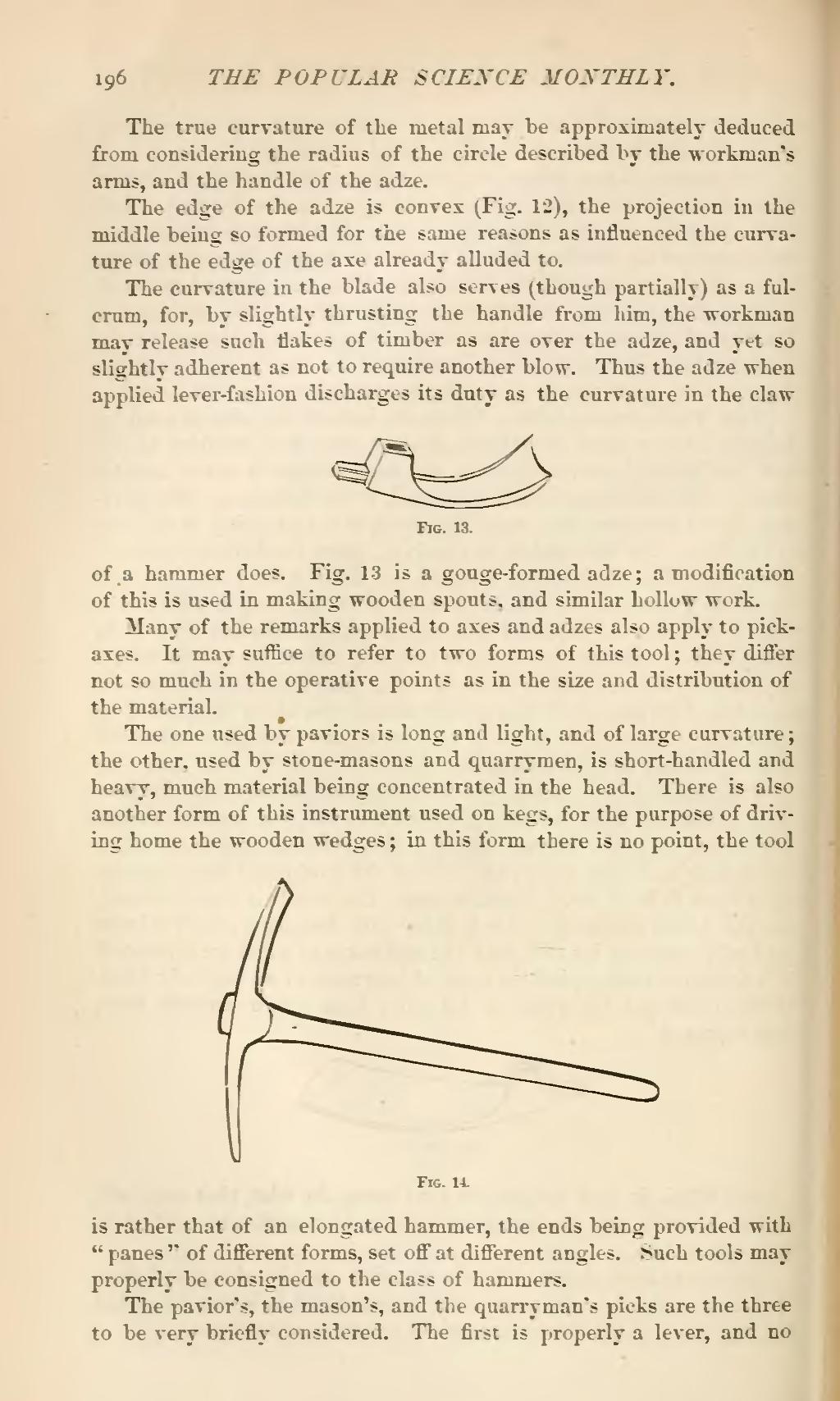The true curvature of the metal may be approximately deduced from considering the radius of the circle described by the workman's arms, and the handle of the adze.
The edge of the adze is convex (Fig. 12), the projection in the middle being so formed for the same reasons as influenced the curvature of the edge of the axe already alluded to.
The curvature in the blade also serves (though partially) as a fulcrum, for, by slightly thrusting the handle from him, the-workman may release such flakes of timber as are over the adze, and yet so slightly adherent as not to require another blow. Thus the adze when applied lever-fashion discharges its duty as the curvature in the claw

Fig. 13.
of a hammer does. Fig. 13 is a gouge-formed adze; a modification of this is used in making wooden spouts, and similar hollow work.
Many of the remarks applied to axes and adzes also apply to pick-axes. It may suffice to refer to two forms of this tool; they differ not so much in the operative points as in the size and distribution of the material.
The one used by paviors is long and light, and of large curvature; the other, used by stone-masons and quarrymen, is short-handled and heavy, much material being concentrated in the head. There is also another form of this instrument used on kegs, for the purpose of driving home the wooden wedges; in this form there is no point, the tool

Fig. 14.
is rather that of an elongated hammer, the ends being provided with "panes" of different forms, set off at different angles. Such tools may properly be consigned to the class of hammers.
The pavior's, the mason's, and the quarryman's picks are the three to be very briefly considered. The first is properly a lever, and no

